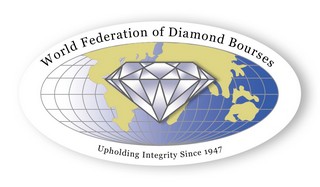Internationally Recognised Standards in Diamond Grading: Definition, Role, and Importance
Internationally recognised standards in diamond grading refer to a set of rules, guidelines, and processes that are universally acknowledged and regulated by internationally accredited bodies. These standards are essential in ensuring that diamonds are graded fairly, consistently, and transparently, maintaining trust and confidence in the diamond industry across the globe. By adhering to these universally accepted standards, diamond grading and certification can be reliably communicated to consumers, manufacturers, retailers, and investors.
These standards encompass various aspects of diamond evaluation, including the 4 Cs (Cut, Colour, Clarity, and Carat weight), as well as other characteristics such as fluorescence, symmetry, and overall finish. These standards help to maintain consistency across the diamond industry and allow for a uniform system of assessment that is recognised internationally.
Key International Diamond Grading Bodies
Several prominent bodies and organisations have established internationally recognised grading standards to ensure quality, transparency, and ethical practices within the diamond industry. These include:
CIBJO (The World Jewellery Confederation): CIBJO is an international non-governmental organisation that establishes standards and guidelines for the jewellery industry, including diamonds. It provides a platform for cooperation between various diamond organisations worldwide and sets clear rules for diamond grading, ensuring uniformity and fairness in the assessment process. The CIBJO Blue Book, which is updated regularly, is a key resource for grading standards and terminology. It provides the groundwork for consistent grading of diamonds, gemstones, and jewellery globally.
LMHC (Laboratoire Monégasque de Haute Couture): LMHC is a recognised laboratory and grading authority that plays an essential role in the diamond industry. This laboratory operates under internationally accepted standards for diamond evaluation and plays a vital role in the certification and grading of diamonds, ensuring they meet the highest industry standards. LMHC’s commitment to ethical sourcing, quality, and transparency aligns with the best practices in the global diamond market.
World Federation of Diamond Bourses (WFDB): The WFDB is a leading international organisation that represents diamond exchanges worldwide. It works to set and regulate industry standards for diamond trading and grading, helping to foster trust and transparency in the diamond trade. Through its collaboration with other diamond industry bodies, the WFDB ensures that grading procedures and diamond transactions follow globally recognised ethical and operational standards. The organisation also advocates for the fair treatment of all stakeholders within the diamond industry, from miners to consumers.
International Diamond Council (IDC): The IDC is another important entity that helps to establish and uphold internationally recognised grading standards. It works in close association with the WFDB and IDMA (International Diamond Manufacturers Association) to ensure that diamond grading procedures are consistent and standardized across the world. The IDC plays a key role in the regulation of diamond grading terminology, ensuring uniformity in how diamonds are assessed and described, as well as in the certification of diamonds based on these grading parameters.
The Role and Importance of Internationally Recognised Standards
Consistency and Fairness in Grading: Internationally recognised standards ensure that diamonds are evaluated using the same criteria and terminology, regardless of where or by whom the grading is conducted. This consistency is crucial for maintaining fairness in the diamond industry, ensuring that diamonds of the same quality are graded similarly, regardless of geographical location. Such consistency is particularly important for the consumer, who can trust that the diamond they are purchasing has been graded according to globally accepted standards.
Increased Transparency: Diamond grading standards established by recognised bodies help to enhance transparency in the industry. Clear grading criteria mean that consumers and businesses alike can understand the specific qualities of a diamond, such as its colour, clarity, and cut. Transparency in diamond grading helps to build consumer confidence, reduce the risk of fraud, and promote ethical business practices in the market.
Protection for Consumers and Investors: Consumers and investors benefit from internationally recognised grading standards because they provide assurance that diamonds are being assessed accurately and reliably. These standards reduce the risk of misrepresentation and ensure that a diamond’s value is fairly determined based on objective characteristics. Grading reports issued by accredited laboratories that follow these internationally recognised standards provide a clear, professional assessment of the diamond, which can help inform purchasing decisions and investments.
Global Recognition and Credibility: Internationally recognised grading standards help diamonds gain credibility in the global market. With the presence of globally accredited bodies like CIBJO and WFDB, diamonds that meet these grading standards are more likely to be accepted and trusted worldwide. Such recognition boosts the reputation of both diamonds and the jewellery industry as a whole, ensuring that products meet high-quality benchmarks that are respected internationally.
Standardisation of Diamond Terminology: International grading standards standardise the terminology used in diamond grading, making it easier for consumers, jewellers, and diamond professionals to understand the qualities of a diamond. Terms such as “clarity,” “cut,” and “carat weight” have universally understood definitions that enable individuals across the world to discuss diamonds on a common platform. This standardisation facilitates better communication and understanding between all parties involved in the diamond industry, from manufacturers to retailers to consumers.
Prevention of Misleading Practices: The presence of internationally recognised grading standards helps prevent misleading or fraudulent grading practices. By adhering to established and transparent guidelines, grading laboratories can help ensure that diamonds are accurately represented and priced according to their true quality. This protection extends to consumers who may otherwise fall prey to false or exaggerated claims about a diamond’s characteristics and value.
Support for Ethical and Sustainable Practices: International grading standards often go hand in hand with ethical and sustainable practices in the diamond industry. Many recognised bodies, such as CIBJO, place strong emphasis on conflict-free diamonds and encourage grading labs to verify that diamonds are sourced responsibly. As part of global efforts to eliminate conflict diamonds from the market, these standards promote the traceability of diamonds and help the industry maintain ethical sourcing practices.
Facilitation of Trade and International Transactions: With consistent grading standards, international trade and transactions become easier and more reliable. Buyers and sellers can engage in diamond deals with confidence, knowing that they are working from a standardised set of grading rules. This uniformity is particularly important in global markets where diamonds are sold across borders and to consumers from diverse backgrounds. Having internationally recognised grading standards simplifies the evaluation process, reducing the risk of disputes and disagreements.
The Importance of Internationally Recognised Standards
Internationally recognised standards in diamond grading play a vital role in maintaining the integrity, transparency, and fairness of the global diamond industry. By ensuring that diamonds are evaluated based on consistent criteria and terminology, these standards protect consumers, investors, and businesses alike. They facilitate fair trade, promote ethical practices, and support sustainable growth in the diamond sector.
The involvement of accredited bodies such as CIBJO, LMHC, WFDB, and IDC ensures that diamond grading procedures adhere to internationally respected rules and practices. As the diamond industry continues to evolve, these standards will remain a cornerstone of trust, enabling both the industry and its consumers to navigate the diamond market with confidence.


